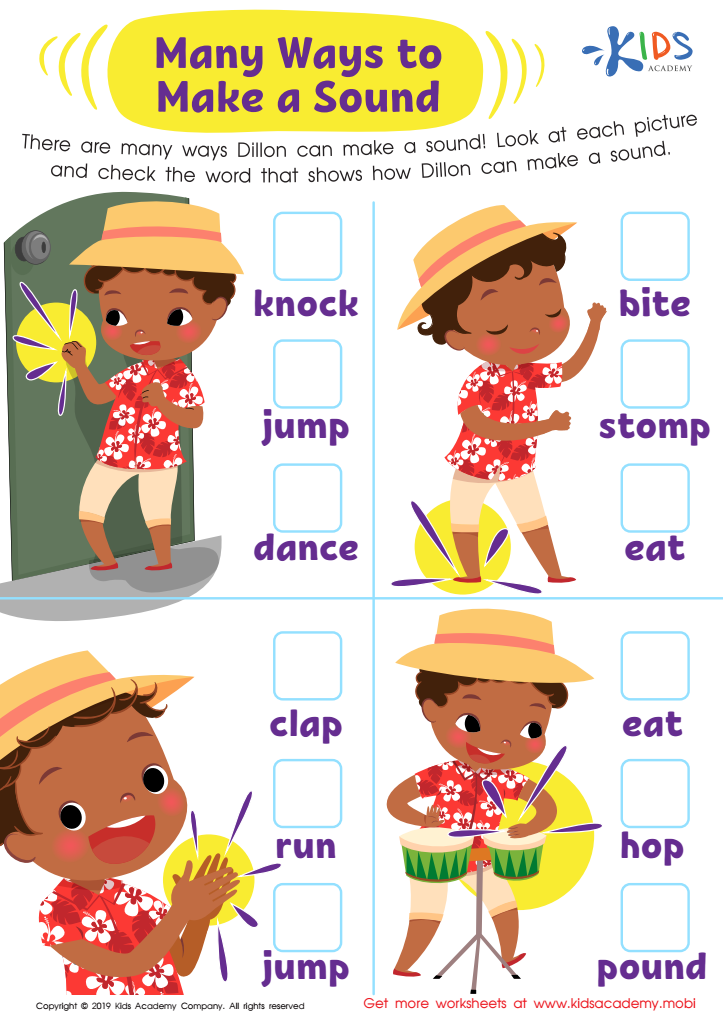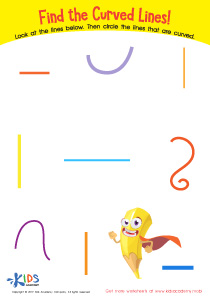Sound identification Phonics Worksheets for Ages 3-9
4 filtered results
-
From - To
Discover our engaging Sound Identification Phonics Worksheets designed specifically for children aged 3-9. These interactive resources help young learners develop essential phonemic awareness skills by focusing on sound identification. Through fun activities and colorful illustrations, children will learn to recognize and differentiate various sounds, laying a solid foundation for reading and language development. Each worksheet is thoughtfully crafted to capture attention and make learning enjoyable. Ideal for both classroom settings and at-home practice, our Sound Identification Phonics Worksheets encourage kids to explore the exciting world of sounds in a playful and effective way. Unlock your child's potential today!


Phonological Awareness: Assessment 2 ELA Worksheet


Many Ways to Make a Sound Worksheet


Phonological Awareness: Assessment 2 Worksheet


Phonological Awareness: Assessment 3 Worksheet
Sound identification phonics is crucial for children aged 3-9 as it lays the foundational skills for reading and literacy. Understanding how sounds correspond to letters and words enables young learners to decode and blend sounds, which is essential for reading fluency. At this age, children's brains are especially receptive to language learning, making it the ideal period to introduce phonetic concepts.
Parents and teachers should care about this because strong phonics knowledge boosts children’s confidence and motivates them to engage with reading. Supporting sound identification can also help children develop better spelling skills, as phonics education teaches them the correlation between sounds and written language. Moreover, early engagement with phonics can lead to improved academic performance, reducing the likelihood of reading difficulties later on.
Sound identification assists in distinguishing similar sounds, enhancing listening skills and auditory processing, which are beneficial beyond the classroom. As children develop these early literacy skills, they cultivate a love for reading that can last a lifetime. Active involvement in phonics education fosters a supportive learning environment at home and school, creating opportunities for bonding over books, thereby reinforcing the joy of literacy and lifelong learning.

 Assign to My Students
Assign to My Students















